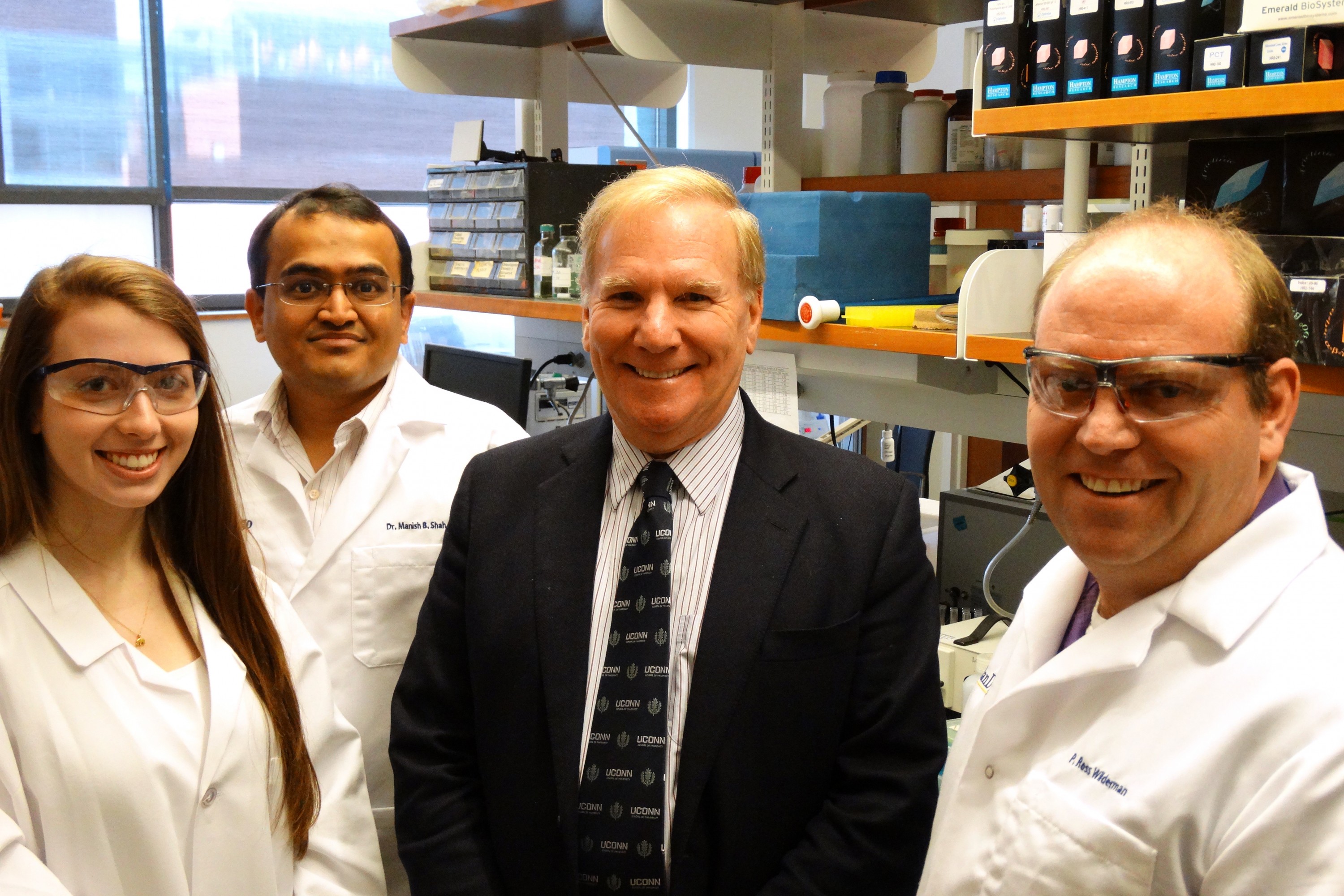During his initial year as an undergraduate at the University of California, Los Angeles, James Halpert was named Outstanding Freshman Chemistry Student and spent the next two summers performing lab work with funding from the National Science Foundation.
The trajectory seemed a sure course for the current dean of UConn’s School of Pharmacy. Yet Halpert is anything but conventional. It turns out the first degree he earned a couple of years later was a bachelor’s in Scandinavian languages and literature.
“It was the opportunity to study abroad that really intrigued me,” says Halpert, of his junior year decision, which served as a catalyst for the change. “I looked at the list of programs and I knew absolutely nothing about Sweden … That’s how I decided on my destination.”
“I thought that if I didn’t take this opportunity, I might never leave my comfort zone.”
True to the definition of catalyst, the decision to pursue a different academic route did not render permanent change. Halpert returned to chemistry and, on April 2 at the business meeting of the American Society for Pharmacology and Experimental Therapeutics, his outstanding career achievements will be honored with the 2016 PhRMA Foundation Award in Excellence in Pharmacology/Toxicology.
After graduating from UCLA, Halpert decided to return to Sweden and work as a lab technician, which eventually led to a master’s in toxicology from the Karolinska Institute and doctorate in biochemistry from Uppsala University, both in that Nordic nation.
His dissertation, still a widely cited work, explicated the functioning of neurotoxins in the venom of the Australian tiger snake. A major part of his research was determining the amino acid sequences of two of the proteins.
“It was like putting together a big jigsaw puzzle without the picture on the front of the box,” says Halpert. “I had all the pieces, but no idea of how they should be assembled. When I finally completed the first sequence, it was exhilarating.”
His work with protein toxins led to Halpert’s interest in the field of chemical toxicity and postdoctoral research at Vanderbilt University, where he undertook his life’s focus: cytochrome P450.
Cytochromes P450 or CYPs (pronounced “sips”) are enzymes that break down a variety of molecules and chemicals in the body. Halpert was intrigued with the CYPs found in the liver – the body’s central processor for handling foreign compounds.
Today we know that there are about a dozen different P450s in the human liver, but when Halpert was starting out, no one knew exactly how many P450s there were or what they did. He was a new faculty member at the University of Arizona, when his department head suggested that he apply for a PhRMA grant for faculty development. Receiving this award, says Halpert, was a pivotal moment in his career.
“I’ll never forget what it is like to be a young faculty member, just starting your career. You know you have the credentials but you still wonder, ‘Are my ideas really any good?’”
In the CYP equivalent to an online dating profile match, Halpert intended to figure out which compounds and enzymes interacted and why. Much subsequent research into drug interactions and liver toxicity was enabled by this foundational work conducted by Halpert and his team. His work with P450 inhibitors helped set the stage for work on drug interactions with other drugs or with components of the diet, such as grapefruit juice.
“We know so much now about molecular biology and drug metabolism today that my early work almost sounds like a high school project to today’s researchers,” says Halpert. “But when we were starting out, the work really advanced the field.”
As technology in the field developed, however, Halpert made deliberate decisions to move his research in different directions. He assembled a team with knowledge of X-ray crystallography in order to move his studies from animal to human models. One postdoc on Halpert’s team, Emily Scott, developed the first mammalian P450 crystal structure to be published by the National Academy of Science.
Now as dean, Halpert still maintains an active research lab. Manish Shah, assistant research professor of pharmacy, says he sees Halpert on almost a weekly basis at meetings and research presentations to discuss the results of experiments.
“Jim has a knack for knowing and realizing the pitfalls of the scientific project in hand,” says Shah. “He’s always interested to hear about the latest results from research in the laboratory in order to plan for future studies.”
Halpert’s most recent paper was published in Molecular Pharmacology. Ironically, this research comes from his early interests in environmental toxicology. Toxicologists have always been interested in how mammals break down plant toxins, Halpert says. Through joint funding from NSF, he is working with Denise Dearing at the University of Utah. Together their teams are studying whether or not P450s play a role in protecting woodrats from a diet high in juniper.
“Right now,” he says, “our work has given me more questions than answers. Now we need to look at our basic assumptions from a different perspective. I enjoy that – not only solving the puzzle, but figuring out a new way to approach the problem.”
“I’m always looking for opportunities,” says Halpert, a chemist who knows the benefit of a catalyst. “The only way to advance sometimes is to disrupt the current thinking a little.”



